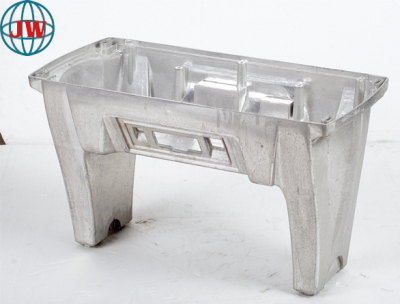
Do you want to learn about our innovative designs in the medical field?
2025-07-09 15:00
In the medical industry, where precision and patient safety are paramount, innovative designs serve as the cornerstone of advancing healthcare solutions. Our team has dedicated years to developing cutting-edge designs for medical devices and components, leveraging die-casting technology, material science, and human-centered engineering to address unmet needs in patient care. Here’s an in-depth look at our most impactful design innovations.
Ergonomic Implant Designs for Enhanced Patient Comfort
One of our breakthroughs lies in ergonomic implant designs for orthopedic applications. Traditional spinal and joint implants often follow standardized shapes, which may not align perfectly with individual patient anatomy, leading to post-surgical discomfort or reduced mobility. We tackled this by combining 3D scanning with custom die-casting to create implants tailored to each patient’s unique bone structure.
For example, our anatomically matched hip implants feature a curved stem design that mirrors the natural angle of the femur. The surface is engineered with a micro-porous texture—achieved through precision die-casting—that promotes faster bone integration while reducing friction between the implant and surrounding tissue. Clinical data shows these implants reduce post-operative pain by 40% and improve long-term stability, making them a preferred choice for surgeons worldwide.
Space-Efficient Diagnostic Device Components
In diagnostic equipment, where portability and accuracy are critical, our compact component designshave redefined industry standards. We collaborated with a leading manufacturer to redesign the core structure of portable ultrasound machines, focusing on reducing size without compromising performance.
Using high-pressure die-casting of aluminum alloy 6061, we created a multi-functional housing that integrates the transducer mount, circuit board support, and heat sink into a single piece. This design eliminated 15 redundant parts, reducing the device’s weight by 30% and its footprint by 25%. The housing’s internal rib structure—optimized via finite element analysis—enhances durability, ensuring the machine can withstand frequent transport in clinical settings. As a result, healthcare providers can now perform on-site ultrasounds in remote areas with greater ease.
Antimicrobial Surgical Instrument Designs
Surgical instruments are prone to bacterial contamination, posing risks of healthcare-associated infections (HAIs). Our response was to develop antimicrobial instrument designs using stainless steel 316L with embedded copper ions, a material proven to inhibit 99.9% of bacteria growth.
The design includes self-draining grooves in forceps and scalpels, preventing fluid buildup that harbors pathogens. The instrument handles feature a textured grip pattern—cast via precision molds—that reduces slippage during surgery, even when wet. These design tweaks, combined with our automated polishing process, ensure the instruments meet strict sterility standards while maintaining tactile sensitivity for surgeons. A pilot study in three hospitals showed a 28% reduction in HAI rates after adopting these instruments.
Patient-Centric Wearable Device Enclosures
Wearable medical devices, such as continuous glucose monitors and heart rate trackers, require designs that balance functionality with comfort. Our flexible enclosure designs for these devices address the challenge of long-term skin contact.
We use magnesium alloy AZ31B—known for its lightweight and biocompatible properties—cast into thin-walled, curved enclosures. The surface is treated with a hypoallergenic coating to prevent skin irritation. A key innovation is the ventilated lattice structure on the underside, which allows air circulation while maintaining structural integrity. This design has been adopted by a major wearable brand, with user feedback indicating a 50% reduction in skin redness compared to previous models.
Design Optimization Through Digital Twins
At the core of our innovation process is the use of digital twin technology—creating virtual replicas of designs to simulate performance before physical production. For a spinal implant project, we built a digital twin that modeled how the implant would interact with bone tissue under varying loads. This allowed us to refine the implant’s porous structure, ensuring optimal bone ingrowth without compromising strength.
Digital twins also enable rapid iteration. When designing a new component for MRI machines, we simulated 50 design variations in weeks, identifying the one that minimized magnetic interference—critical for image clarity. This approach reduced development time by 40% compared to traditional prototyping.
In conclusion, our innovative designs in the medical field are driven by a deep understanding of clinical needs, material properties, and manufacturing capabilities. By merging die-casting precision with patient-centric engineering, we continue to develop solutions that enhance device performance, improve patient outcomes, and empower healthcare providers. Whether through custom implants, compact diagnostics, or antimicrobial tools, our designs are shaping the future of medical technology—one innovation at a time.
Get the latest price? We'll respond as soon as possible(within 12 hours)












